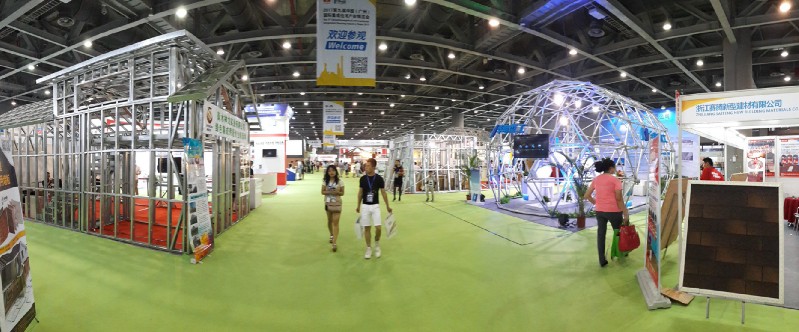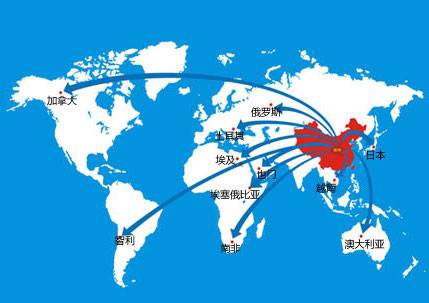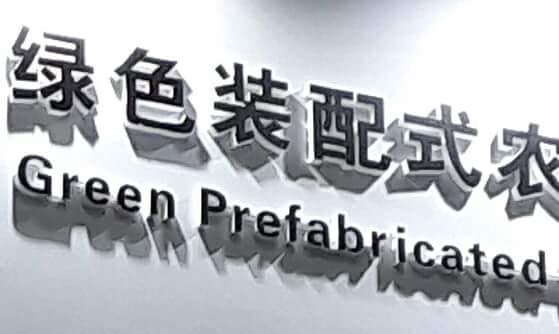It’s more than ten years I’m scouting internationally over prefab. Reporting publicly for me is a complex activity that would involve writing books. But I felt I have to start spreading my system of beliefs with the largest co
It’s more than ten years I’m scouting internationally over prefab. Reporting publicly for me is a complex activity that would involve writing books. But I felt I have to start spreading my system of beliefs with the largest community: to inform, to anticipate what would be next from my special point of view. So I’m starting with my first post on Medium dealing with one of the hottest question in the field: “Is China becoming the Global Production Hub for Prefabricated Buildings?”.
Recently I took part at The China Prefab House Fair in Guangzhou representing my company Green Prefab and a client. Hosted in the biggest building in the World, the Guangzhou Fair, it was collecting two-hundred exhibitors only on the prefab section.

Prefab Hall, The 7th China Prefab House, Modular Building, Mobile House & Space Fair, Guangzhou, China
Clearly China was exposing a specific technology system: light steel framed buildings with light concrete panels for building envelopes. Panels were clearly not the best choice but they should temporary save the cement industry from this innovative wave of industrialisation. Light steel structures identifies a niche in the global market that is probably currently under-estimated and sensible to grow.
China wasn’t shy in the last years to import and incentivise the best solutions available internationally, integrating know-how and softwares from foreigner initiatives like Framecad Limited, started in Auckland, New Zealand now based in Dubai and Vertex Systems from Finland. They are both producing an entire platform from design to production.
Also the steel framed system definition looks to be advantaged by greater best practices developed in Australia, Japan during the latest decades. At the same time it is not technologically so different from the ‘baloon frame’ or the stick-houses they have in USA, instead it is using a much more resistant and homogeneous material, recyclable to infinity.
Steel is even recognised in literature as a green material in the life-cycle assessment, since its recyclability. So this is the perfect match between eco-compatibility in a circular economy and modern methods of industrial production. More when you use the factory to assemble off-site you can talk about prefabrication and this is enabling a lot of savings in terms of time and costs, depending from the scale of production.
So, here it is the idea that is possible to industrialise the process in construction to the point that BIM and machines have the ability to produce a building in factory. Boom! The advantages of off-site production are huge: mass production, quality check, time speeding. The innovation brought by Chinese rely on a new generation of affordable high-speed machines (under $ 50,000) that are able to bend, cut and drill light steel any kind.
Will this be the new winning system in the prefab arena? For sure I noticed at the Chinese Fair that they were selling more machines than buildings. Among machines suppliers I would like to mention FrameMac for their smart solutions. The feeling is that the market is still very small out there (suppliers are in need of cash flow) and the establishment is trying to push the way of the production availability. More production, more products, more money. A sort of bottom up approach of brutal force to open a new market. Consider that for the cheap price and the compactness one may be tempted to bring the machines on construction site directly and even assembling in DIY, establishing new local companies. This systems are already sold abroad with a preference for emerging economies and the big part of revenue from Africa, Middle East, South East Asia. Australia seems to be very interested about Chinese suppliers for geographical proximity. India, probably perceived as a competitor, is not in their list. Currently some of them are already CE certified through European emerging economies like Polonia, Romania, Bulgaria and similar activities are in the process for North America through Canada.

From a brochure of a Chinese supplier at China Prefab Fair 2017
March 2017 President of the People’s Republic of China Mr. Xi Jinping had unveiled The Belt and Road Initiative: it’s a framework for cooperation activities leading China’s Banks to loan internationally. The incentives are exceptional and it’s a call to open business with China, meanwhile USA is more and more intrigued by a sort of autarky. This programme is directly supporting this new emerging steel-based industry, and allows main stakeholders to offer you money from China’s Bank for your any building development in the case you do it with their products. Brilliant.
Finally, it was so funny to me to find one of the biggest booth in the Fair announcing themselves like “Green Prefabricated Housing Industry Technology Innovation Strategy”, since I was one of the first presenting in China the concept to many relevant Chinese institutions and companies (Thsinghua University, Jaotong University, Chi a Academy of Building Research, Vanke, Taikong Panel Corp.), it was 2007. So I feel I contributed significantly since my project name at that time was Green Prefab already and the articulation of the name in Chinese given to me by Prof. Qin Youguo (former Dean of Architecture at Thsinghua University) actually looks identical.
Green Prefabricated Housing Industry Technology Innovation Strategy, booth advise at China Prefab Fair 2017
Source from https://medium.com/@furiowrites/is-china-becoming-the-global-production-hub-for-prefabricated-buildings-7ce10e32c245





